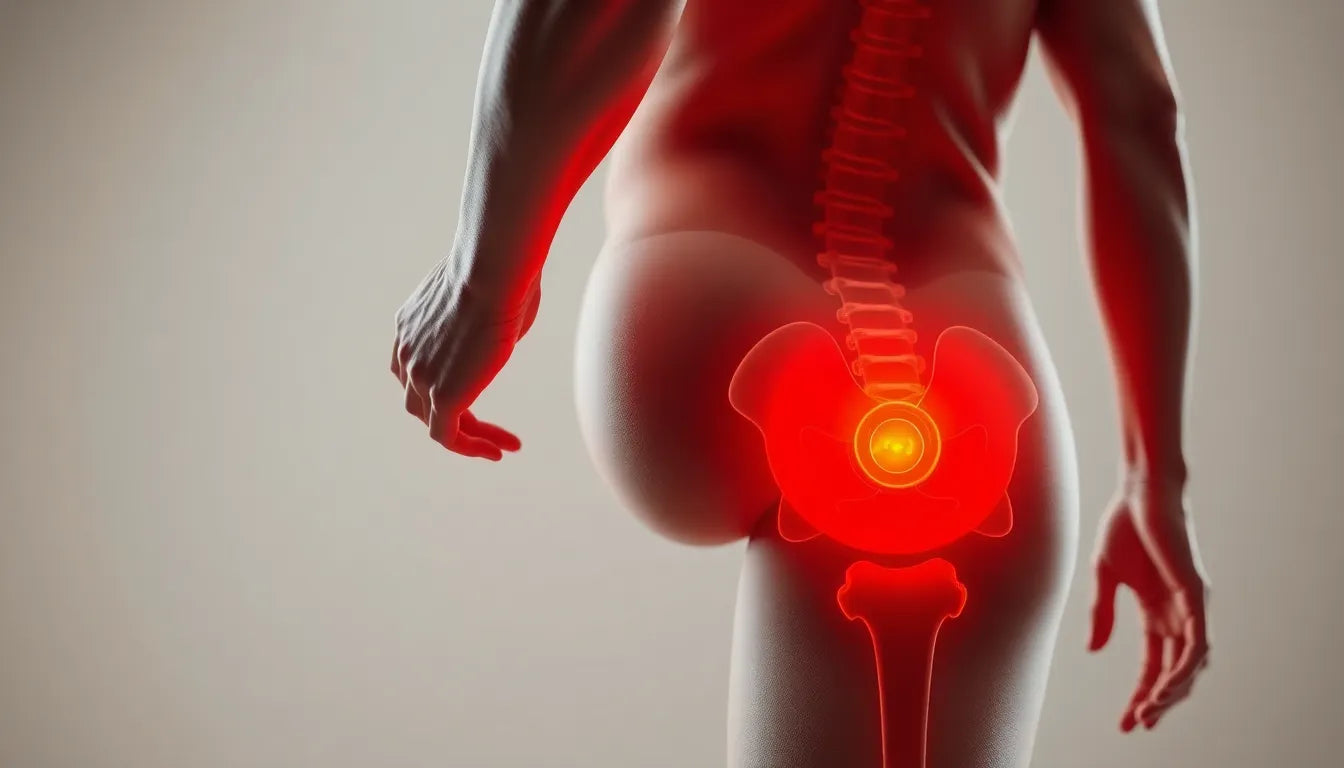Ankle pain is a common issue that affects people of all ages and lifestyles. Whether it's a sudden injury from a sports activity or a chronic condition that has developed over time, experiencing pain in the ankle can significantly impact your daily life. The ankle is a complex joint that bears the weight of the body and allows for a range of movements, making it susceptible to various types of injuries and conditions. From acute injuries like sprains and fractures to chronic issues such as arthritis, understanding the nature of your ankle pain is crucial for finding effective relief.
Understanding the causes of ankle pain
Identifying the root causes of ankle pain is the first step towards effective treatment and relief. Acute ankle pain often arises from injuries such as sprains, fractures, or strains, which may occur during physical activities or accidents. These injuries can lead to immediate pain, swelling, and sometimes instability in the joint. On the other hand, chronic ankle pain might result from overuse injuries, repetitive strain, or underlying conditions like tendonitis, bursitis, or arthritis. Recognizing the specific cause of your pain is essential in determining the appropriate management strategies.
Chronic conditions, such as osteoarthritis or rheumatoid arthritis, can cause persistent discomfort and limit mobility. These conditions may require long-term management to alleviate pain and improve function. Biomechanical issues, including nerve damage or imbalances in the body's structure, can also contribute to ongoing ankle pain. A thorough understanding of these potential causes can help you and your healthcare provider develop a targeted treatment plan.
Potential for relief and improved quality of life
Despite the challenges that ankle pain can present, there is hope for relief and an improved quality of life. With the right management strategies, many individuals can reduce their pain and return to their normal activities. Treatment options vary depending on the cause and severity of the pain, but they often include a combination of rest, physical therapy, medication, and ergonomic aids such as orthotic inserts or supportive footwear.

Women's Posture Shirt™ - Black
Patented shirt that supports and improves posture, relieves pain and tension, and increases postural awareness.

Men's Posture Shirt™ - White
Medical-grade, NeuroBand™ shirt activates muscles, relieves pain/tension, and promotes better posture daily.
By addressing the underlying causes of your ankle pain and implementing appropriate treatment strategies, you can take significant steps towards alleviating discomfort and enhancing your overall well-being. Whether you're dealing with a recent injury or managing a chronic condition, understanding your pain and seeking professional guidance are key components in finding effective relief.
Common causes of ankle pain
Ankle pain can stem from a variety of causes, each presenting distinct symptoms and requiring specific treatments. Understanding these causes is crucial for effective management and relief.
Acute injuries
Acute injuries are among the most common causes of sudden ankle pain. These typically include sprains, fractures, and strains, often resulting from physical activities or accidents. A sprain occurs when the ligaments that support the ankle stretch or tear, leading to immediate pain, swelling, and sometimes instability. Fractures, or breaks in the bone, can also occur, often accompanied by severe pain and an inability to bear weight on the affected foot. Strains involve the overstretching or tearing of muscles or tendons around the ankle, causing pain and swelling.
Chronic conditions
Chronic ankle pain often arises from conditions that develop over time, such as overuse injuries or inflammatory diseases. Tendonitis and bursitis are common overuse injuries where tendons or bursae become inflamed due to repetitive strain. Inflammatory diseases, such as rheumatoid arthritis and gout, can cause persistent pain and swelling in the ankle joint. Osteoarthritis, a degenerative condition, is particularly prevalent in older adults, leading to joint stiffness and discomfort due to the gradual wear and tear of cartilage.
Biomechanical issues
Persistent ankle pain can also result from biomechanical issues, which include problems with the body's structure and movement. Fascia, the connective tissue surrounding muscles and organs, can become tight or inflamed, contributing to pain. Nerve damage, such as that caused by neuropathy, can lead to chronic discomfort. Additionally, imbalances in the body's biomechanics, such as uneven weight distribution or abnormal gait patterns, can place additional stress on the ankle, exacerbating pain. Diagnosing these issues often requires a combination of clinical examination and imaging techniques like X-rays, MRI, or ultrasound.
Anatomical and diagnostic insights
Accurately diagnosing the source of ankle pain is essential for effective treatment. Understanding the anatomy of the ankle and utilizing appropriate diagnostic approaches can help pinpoint the underlying cause.
Symptom localization
Localizing the pain can provide valuable clues for diagnosis. Pain on the outer side of the ankle often indicates ligament injuries, such as lateral ankle sprains, while pain on the inner side may suggest issues with the deltoid ligament or tibial tendon. Diffuse or widespread pain might point to nerve-related issues or inflammatory conditions. By analyzing symptom patterns, healthcare professionals can better differentiate between potential causes.
Diagnostic approaches
A thorough clinical assessment is the cornerstone of diagnosing ankle pain. This includes a detailed medical history and physical examination to assess the range of motion, swelling, and areas of tenderness. In cases where the diagnosis is unclear or when more detailed information is needed, advanced imaging techniques such as X-rays, MRI, or ultrasound may be employed. These tools can reveal fractures, soft tissue injuries, or degenerative changes within the joint. Consulting with healthcare professionals ensures a comprehensive evaluation and helps determine the most appropriate treatment plan.
By understanding the common causes and diagnostic methods for ankle pain, individuals can take proactive steps towards effective management and relief. Addressing the root cause of the pain is key to improving mobility and enhancing quality of life.
Treatment and management strategies for ankle pain
Finding effective relief from ankle pain involves a combination of conventional treatments and proactive management strategies. By addressing both the immediate symptoms and long-term causes, individuals can enhance their recovery and prevent future issues.
Conventional treatments
For acute ankle injuries, the RICE method—rest, ice, compression, and elevation—is a widely recommended first-line treatment. This approach helps reduce swelling and alleviate pain, promoting faster recovery. In addition, nonsteroidal anti-inflammatory drugs (NSAIDs) can be used to manage pain and inflammation.
For chronic conditions, physical therapy plays a crucial role in strengthening the muscles around the ankle, improving flexibility, and restoring function. Tailored exercises can help manage conditions like tendonitis or arthritis, reducing pain and enhancing mobility.
Ergonomic aids and support
Ergonomic aids such as orthotic inserts, braces, and supportive footwear can provide significant relief for those suffering from ankle pain. These devices help stabilize the ankle, distribute weight more evenly, and reduce stress on the joint. Using proper footwear and supportive devices can prevent further injuries and aid in the recovery process.
Holistic and long-term management
Incorporating lifestyle modifications is essential for long-term management of ankle pain. Regular exercise tailored to individual needs can strengthen the ankle and improve overall stability. Maintaining a healthy weight reduces stress on the joints, while balanced nutrition supports joint health.
Ongoing monitoring and follow-up with healthcare providers ensure that treatment plans remain effective and are adjusted as needed. Engaging in preventive measures, like wearing appropriate footwear and avoiding high-risk activities, can help prevent recurrences of ankle pain.
Frequently Asked Questions
What are the most common symptoms of ankle pain?
Common symptoms of ankle pain include swelling, redness, and instability. These symptoms often accompany injuries like sprains or fractures, and can also be present in chronic conditions such as arthritis.
When should I seek medical attention for ankle pain?
If ankle pain persists for more than a few days, worsens, or is accompanied by severe swelling or inability to bear weight, it is advisable to seek medical attention. Early diagnosis and treatment can prevent further complications.
Can ergonomic aids really help with ankle pain?
Yes, ergonomic aids like orthotic inserts and ankle braces can significantly alleviate pain by providing support and stability. They help distribute weight evenly and reduce stress on the ankle joint, aiding in both recovery and prevention of further injuries.
How can I prevent ankle pain from recurring?
Preventing ankle pain involves strengthening exercises to improve stability, wearing proper footwear that offers support, and maintaining a healthy weight to reduce joint stress. Additionally, avoiding activities that put excessive strain on the ankle can help prevent injuries.
Is surgery ever necessary for ankle pain?
Surgery is generally considered only when conservative treatments fail to alleviate pain or in cases of severe injuries such as complex fractures. Surgical intervention may be necessary to repair damaged ligaments or bones, with the goal of restoring function and reducing pain.
Kilder
- Aleris. "Inflammation i ankelleddet." Aleris.dk.
- Anatomia. "Smerter i anklen." Anatomia.dk.
- Fodmagasinet. "Døjer du med ankelsmerter?" Fodmagasinet.dk.
- Din Flexible Sundhed. "Akutte ankelsmerter." Dinflexiblesundhed.dk.
- Copenhagen Physio. "Fod & Ankel." Copenhagenphysio.dk.
- Aalborg UH. "Sådan behandler du en forstuvet ankel." Aalborguh.rn.dk.
- Aleris. "Ankelsmerter." Aleris.dk.























